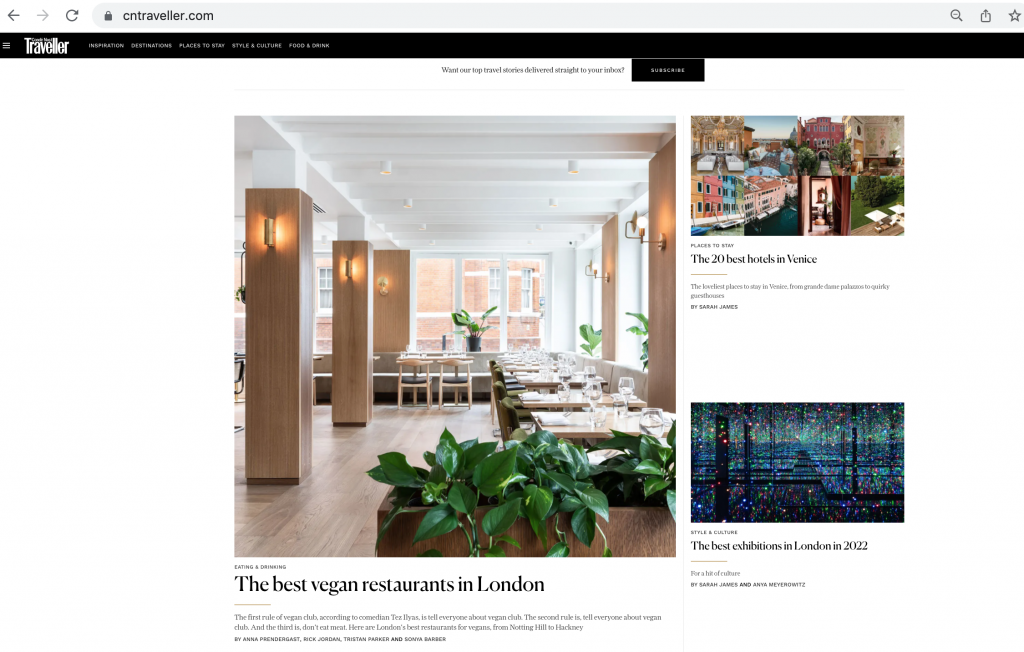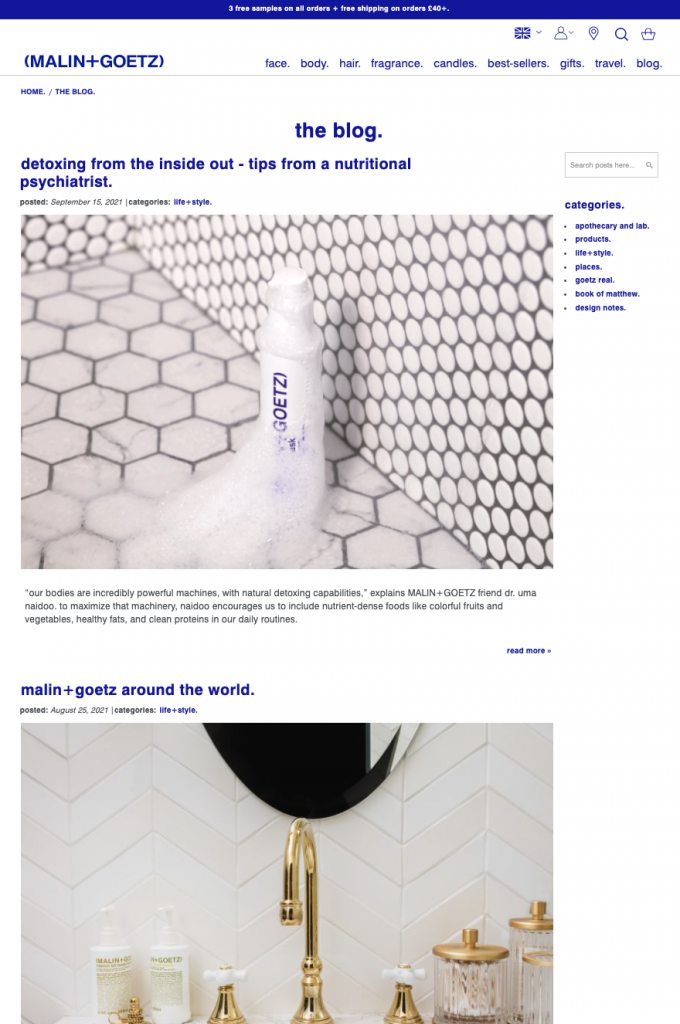Why is Digital PR usurping traditional PR so effectively

In this article, we’re going to show you why digital PR is soundly beating traditional PR in generating brand awareness, website traffic and revenue generation.
But to help you understand how we got here, let’s start with a bit of history.
For many brands in years gone by, seeing their name and their products and services featured in a mass-market newspaper or magazine was a victory even if it was buried on page 67.
It’s no wonder. Traditional media was a bit of a closed shop and notoriously difficult to crack.
How the media used to be
Before the widespread adoption of the internet, the media landscape consisted of national newspapers, magazines, the BBC, and commercial broadcasters.
Editors of newspapers and magazines had big budgets. Each reader paid for their copy and titles profited greatly from the revenues generated by the advertising department which, for larger circulation titles, could bill clients £100,000 or more for a single full colour back page.
Editors also only had between 60 and 200 pages to fill and a third of that was taken up by advertising anyway. To fill that space, they employed dozens of journalists, photographers, and interviewers who created very high-quality content.
To get their clients into these publications, traditional PR practitioners were skilled in the art of persuasion and spinning their client’s take as newsworthy. Sometimes they were successful, sometimes they weren’t.
And so things continued for decades until the introduction of the internet. This changed everything.

The shock of the new
The internet decimated revenues from subscriptions and on-the-page advertising in a period of a little over 10 years.
To recoup some of their losses, owners of publications launched digital editions of their titles only to discover that the revenue each online reader generated was a mere fraction of the revenue brought in by someone who bought the printed publication.
Because stories posted online didn’t turn over as much money as hoped, owners tasked their editors to create a lot more content to increase revenues to the titles. Editors had less money than ever to spend on content but they now needed to create five times the volume.
For traditional PR, the tables had turned.
Now instead of traditional PR execs calling reporters and editors, the same reporters and editors would be calling them up asking “have you got anything for me today?”
You don’t need traditional PR to get into mass-market publications anymore
You could stick to traditional PR and you’ll have a better chance than ever of getting featured, especially in the digital editions of mainstream titles.
And there is still a lot of value in getting backlinks to your brand’s website from traditional media because their websites, in the main, benefit from high authority in the eyes of Google.
But digital PR is a different animal and it delivers very different results.
Think of digital PR as a super-effective hybrid of marketing and PR approach for today’s world.
The goals of digital PR are to:
- help your brand really stand out from the crowd,
- be featured on an ongoing basis in mass-market publications as well as the arguably more valuable niche publications of interest to your target audience,
- build domain authority for greater website traffic, and
- increase conversion rates for people at your website.
Digital PR is an all-out and ongoing battle to get your brand seen and to lead the conversation.
You’re no longer subject to the whims of an editor. It’s the editor’s job to keep up with your agenda and your talking points.
So, how does it work?
Digital PR begins with understanding your target audiences
To gain a thorough understanding of the target audiences you want your brand to be exposed to, we favour the use of buyer personas.
Buyer personas are internal company documents containing educated guesses about the life of a typical representative member of a demographic you want to buy your products and services.
They contain details of a person’s job, income, educational background, relationship status, geographical locations, hobbies and interests, fears and pain points, where they turn to for information and more.
Many teams even download an image from Google to put on their buyer persona document and give them a name to make them more personal.
Buyer personas make the people you want to appeal to more real and relatable.
For marketing teams, buyer personas are key in helping them originate and create the type of content they’d be interested in.
For PR staff and media planners, they give an insight into the types of publications most likely to be of importance to our target audience.
For social media teams, they point to the type of influencer partners which should be sought to generate engagement and a buzz.
Creating topics for mainstream sources to push
Coming up with topics of interest to your target audience and to publications is an ongoing task for any digital PR campaign.
Mainstream publications love this in particular.
If you want to see examples of how digital PR is making its way into mass-media publications, check out the Digital PR Examples Twitter feed which we thank for pointing us to the following six examples.
- Many luxury brands tie in new limited edition launches at Lunar New Year for the increasingly important Chinese middle classes.
- Online boutique, Dolls Kill, created a sublime bit of digital PR with their creation of £85 trainers/sneakers which look like sandwiches. The story was widely featured in the press featuring 3D vegan salami – veganism is a constantly trending topic.
- Deliveroo also created a superb bit of content again targeting vegans with its publication of the British cities which love/order vegan food the most.
- Rightmove and online travel platforms regularly release guides to the top places within a certain country for a variety of different reasons, like this survey from Rightmove on “the happiest places to live”.
- International Living magazine, targeted toward wealthy retirees and those nearing the end of their working lives, gained significant press coverage on the best countries to retire to.
- Parkdean Resorts commissioned a survey for the most romantic getaways in the UK in 2022 and Whitley Bay finished as one of the top suggestions. I am sure that it is just a coincidence that they have a caravan park in the town.
For each of these campaigns, the digital PR teams understand what’s of importance to their target audiences. They then create content for them that also appeals to content-hungry publications.
Brands benefit from their association from publications not only for the publicity but also through the backlinks to their own website. Backlinks are one of Google’s major ranking factors so the more of the right type of backlinks you have, the better.
Unlike with traditional backlink building services, the focus of digital PR is not on creating one piece of content and paying £250 to a third-party website that gets no traffic £250 for a link.
Instead, the aim is to get lots of high authority backlinks at once with each story and create interesting, engaging content that actually drives traffic to your website.
This approach is far more cost-effective and likely to deliver long-term brand awareness than traditional PR or backlink building on its own.
When creating content for external distribution on a campaign, digital PR teams ask themselves the following questions:
- Is the client doing something new / achieved something / helping someone/something that has never been done before?
- Is the client jumping on a trend that has recently been in the news or is it something topical?
- Would you click on this if you saw it on a news site?
- What’s the purpose of the story? Is it helping/entertaining someone? Why are people going to care?
- Is it news, or is it marketing? (i.e. does it look like something that just promotes the brand?)

Opportunity spotting for product PR and brand awareness
Jumping on the back of breaking news and other events in the outside world is also part of digital PR.
How does this work?
For example, in this article in the Drinks Business, wine retailer Majestic has reported a surge in the sale of their Greek wines following a name-drop on BBC ONE’s Saturday Kitchen. It’s not the first time they’ve pulled this particular digital PR trick off – they did the same in 2019 after James Martin name-dropped one of their other wines on his Saturday Morning show.
Another similar non-story was John Lewis’s digital PR team pulling off a great result by linking increased sales in waistcoats, wellies, and Whistles dresses thanks to a combination of Line of Duty and Friends reruns on Channel 5 and Netflix.
Perhaps the finest example of all however was supermarket delivery firm Ocado reporting a jump in the sale of tissues following the release of Adele’s ‘Easy On Me’ music video.
Many of the top 5 and top 10 articles have originated through a digital PR team member pitching a journalist or writer with the idea, making sure to suggest that their client’s product forms part of the countdown.
Part of digital PR is about reacting to events and making the story about their clients.
Most of the results linked to above will have been achieved by particularly nimble and persuasive PR professionals within 24-48 hours of the original event.
Finding niche sites, bloggers, and influencers to work with
Social media is a particularly important part of digital PR. Nearly all mainstream publications have their own social media feeds which can lead to hundreds or thousands of shares for a story you feature in.
But there’s very little that can compete with the value of family, friends, and colleagues sharing content featuring a client brand, except for one thing…
Influencer marketing is a marketing and PR partnership between a brand and a social media user whose content results in higher than average rates of positive interaction with their followers. Influencers are so-called because, in many cases, their recommendation can persuade one of their followers to purchase something or take a particular course of action.
Influencers’ engagement rates (how many times their followers like, comment on, or share their posts) are much higher than even the best-run brand luxury brand social media accounts.
Influencers in themselves are often newsworthy and partnerships with them can be used on PR outreach campaigns.
Influencers create content that attracts your target audiences.
An introduction to your brand, products, and services by an influencer is much more likely to be positively recalled than via paid ads, even though they are successful in themselves.
Other avenues digital PR teams explore are niche interest sites, some professional and some amateur, depending on their traffic, reach, and quality of content.
Influencers, bloggers, and niche sites recognise the opportunity that working with a brand presents them with. Properly motivated (and compensated), the authority and credibility each has in their chosen field reflects well on the brands they work with.
While mass-market media delivers exposure, working with influencers, bloggers, and niche sites delivers intimacy with your target audience.
On-site content
The relationship that consumers have with luxury brands is different from the relationship they have with mass-market brands.
Whereas, with mass-market brands, a liking and a need for a product is required prior to purchase, a desire to buy into the lifestyle of, for example, TK Maxx is not needed.
Investing in luxury brands requires a greater financial commitment by a consumer. It’s that financial commitment together with the history, prestige, and heritage of the brand that makes buying your products and services just as much a lifestyle choice.
We’ve seen how the buzz created by digital PR creates high quality backlinks to your site from mass-market and niche media. On social media, partnering with influencers builds up your own follower count.
Both of these activities lead to an increase in traffic to your website.
Digital PR is so much more than SEO and link building but that is certainly part of it.
Digital PR extends to your onsite content. Think of your website as an online, intangible extension of your brand in which people can lose themselves in your history and uniqueness.
Feed visitors desire to become part of your brand story.

For example, there is no need for Porsche to have separate sections on their website detailing their history, experience, or classic cars but, at the same time, there’s every reason to. Having an online Porsche Museum makes total sense for a luxury brand because what they create are objects of desire, beauty, scarcity, and human ingenuity which deserve celebration and reverence.
Japanese luxury brand SK-II’s website features a superbly written blog containing everything from facial make-up tricks to travel essentials to take on your next holiday. They run inspirational and empowering campaigns from their blog as well as having a healthy proportion of celebrities featured in their content.
Great on-site content which reflects the dreams and hopes of your target audience as well as the history and heritage of your brand creates social sharing opportunities.
But you’re not just selling a product – you’re selling a story and this type of content can provide a consumer with the justification they need to choose your brand over another.
A holistic approach for the modern world
Digital PR is the natural evolution of traditional PR.
Digital PR understands that there is a much wider world of opportunities for exposure than ever before. It knows that we, as consumers, take influence, lead, and inspiration from dozens of different sources now.
Digital PR is a way to provide luxury brands with multiple touchpoints with their target audience on social media, on niche sites, on mainstream media and more on an ongoing basis.
To find out more about Verb Brand’s digital PR services, please drop us a line through our contact form. We’d love to start supporting you on this journey!









